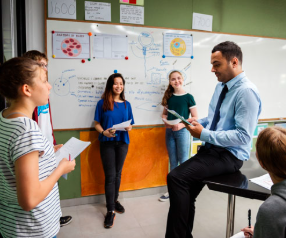In today’s classrooms, student engagement is a top priority. One powerful way to inspire curiosity and deepen understanding is through the integration of the arts into everyday learning. Whether it’s music, painting, drama, or dance, the arts create a vibrant space where students can explore concepts more creatively and connect with material in meaningful ways.
The Power of Creative Expression
When students are given opportunities to express themselves artistically, they often become more invested in their learning. For example, writing a poem about a historical event or acting out a scene from a science lesson can transform abstract information into personal experience. This approach helps students of all learning styles feel seen and capable, encouraging them to participate more fully.
Boosting Motivation Through Multi-Sensory Learning
Arts integration makes learning multi-sensory. Rather than relying solely on reading or listening, students engage through sight, sound, and movement. This kind of learning can boost memory retention and make lessons more enjoyable. A math concept illustrated through rhythmic clapping patterns or a biology topic explored through sketching cells encourages students to see their subjects from fresh angles.
Building Confidence and Collaboration
Group art projects foster teamwork and communication skills. Whether students are co-creating a mural or composing a class song, they learn to share ideas and build on each other’s strengths. This collaboration can spark a sense of community and mutual respect, making the classroom a more positive and supportive space.
Supporting Emotional Well-being
The arts can also serve as a powerful tool for emotional development. Creating art allows students to process feelings and express themselves in a nonverbal way. This can reduce stress and build resilience, helping learners stay engaged even when they face academic challenges.
Making Learning Stick
Ultimately, when students are engaged emotionally and intellectually, they’re more likely to remember what they’ve learned. Arts integration helps connect ideas to real life and to personal experiences—two essential ingredients for long-term understanding.
Conclusion
Incorporating the arts into the classroom is not about replacing traditional subjects, but enriching them. By sparking interest, supporting diverse learning styles, and encouraging emotional connection, the arts help make education a more inclusive, dynamic, and joyful journey.














